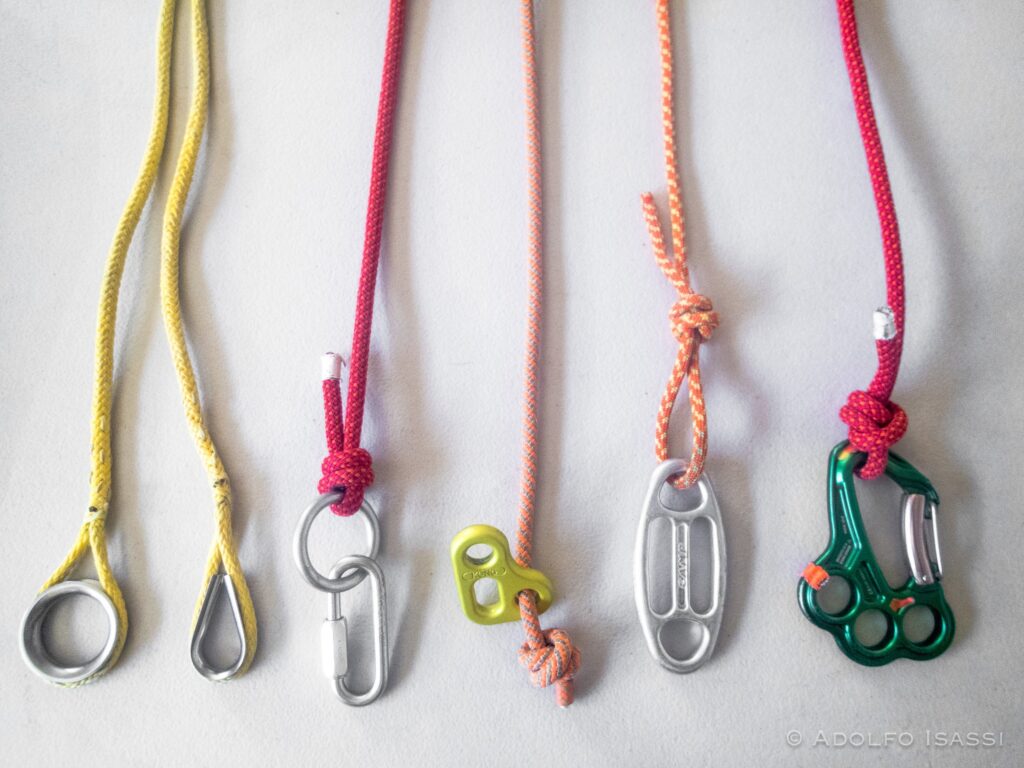Transient Rigging + Releasable Rigging: TR+R
by Adolfo Isassi

Transient rigging, colloquially know as ‘ghosting’ or “metodos de fortuna” in Spanish are great tools for exploring or emergency situations. In areas of the world where artificial anchors are not permitted, or badly installed, these methods fill an important gap in the practice of canyoneering/canyoning. To preserve all the safety advantages of releasable systems (sistemas desembragables), in 2021 Adolfo Isassi CGI Technical Director introduced and proposed the idea of combining these two systems.
Cord based systems:
All cord-based systems are derived from combination of Slip Knots. Because of this, they rely on rope-on-rope friction to keep their integrity under load, and release (become undone) when they are pulled and unloaded. The release of rope-on-rope systems can become very difficult on supple ropes after cyclical loading. Even more difficult if said ropes are wet.
- Dufour / Macramé
- CEM
- Jorgini
Hardware based systems:
Hardware based systems require extra gear, but are better at releasing since the rope is sliding fully or partially on metal or 140plastic to release.
- Toggle sticks
- Plaquettes
- Gigi, Scream, Totem, Slyde, Vlad, 2 Rapides
- Retrievable Bowline
- Retrievable sling
- Offset rings, prusik
Systems that lend themselves as Mid Rope systems:
- CEM
- Macramé
- Adolfini (Jorgini Mid Rope)
Systems that lend themselves as End of Rope systems
- Toggle Sticks
- Jorgini
TR are Static Systems
All Transient Rigging Systems (TR) are inherently static systems. They can not be released to set rope length while loaded, and can not be released to provide indirect rescue-by-lowering
TR systems can be combined with Releasable systems: TR+R
All Transient Rigging systems (TR) can be implemented on an anchor, and a master point can be established downstream the system to implement and independent Releasable (R) system. These 2 systems can be connected or disconnected during the retrieval phase.
Objectives to keep in mind when combining TR+R
- Consider if you want to eliminate re-rigging for last person
- During instruction attempt to leverage current knot skills for people that are knot challenged
- Avoid a loose hardware that may slide out off the rope during recovery
- Avoid heavy hardware falling down on safe designated areas during recovery
- Consider if you need to provide the option to rig a 2 point anchor
- Avoid having 3 times the rope length to solve Rap + Contingency + Recovery
- Create a simple enough system that is easy to teach and gain adoption for mid to advanced users.

